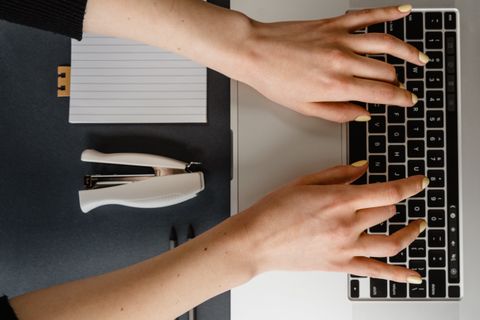

Have you ever thought about how your dissertation's disorganised interview notes become a logical and informative chapter to your work? Transcription is the key. Transcripts serve as the foundation for qualitative data analysis and are frequently used in dissertations as vital support and proof.
A keen eye for detail and strict adherence to particular formatting requirements are necessary for creating the ideal dissertation. Moving forward, we will be discussing all you need to know about qualitative interviews, transcribing for them, and how to write an interview transcript in an APA format.
We’ve also linked a few exemplar interview transcript dissertations at the end of this which you can follow as a guide.
Writing an interview transcript for a dissertation requires balancing academic standards for compliance, accuracy, and coherence. The interviewee's details and variations are conveyed in this transcript, which not only provides essential support for your study but also adds depth and richness to your dissertation.
By following this process you can effectively change the organic flow of a spoken interview into an instructive and captivating written style.
A recent dissertation from a Ph.D. candidate at an internationally recognised college provides an excellent illustration of the significance of transcripts from interviews when working on dissertations.
The researcher performed a number of in-depth interviews with locals, municipal planners, and company owners in order to better understand how urban expansion affects local communities. Every interview provided a different viewpoint on how the community views urban development initiatives and their effects.
Rather than manually transcribing several interview recordings or listening to them on a loop, the researcher employed transcription services to speed up their work.
Services like Good Tape ensure that your data remain protected and secure throughout the entire process as they are fully GDPR compliant, giving you peace of mind that your research is not getting into the wrong hands.
The dissertation's use of direct excerpts from the transcriptions gave the study results a stronger, more genuine voice. As a result, the dissertation's quality was enhanced and the reader and research subjects felt more personally connected. Because of this, the dissertation demonstrated the significant effects of urban growth on several stakeholders while being both academically demanding and very relevant to experiences and viewpoints from the real world.
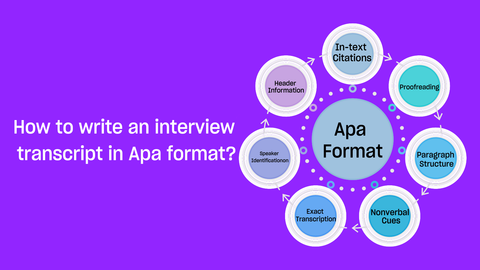
To guarantee that the transcript is accurate, comprehensible, and follows the rules set out by the Publication Manual of the American Psychological Association (APA), writing an interview transcript in APA style requires a certain approach. The actions to take are as follows:
While the answer to how to write an interview transcript in APA format is clear now, it is important to understand that while doing so, you are not only making your work more academically acceptable but also improving its readability score.
The procedure of following APA criteria for your dissertation may be greatly streamlined by using a transcription service, which will make the process much more effective and time-saving. Good Tape offers services in this regard which allows you to transcribe your interview audios adhering to the APA standard in no time.
Investing in a professional service guarantees that your interview transcripts are prepared in accordance with APA guidelines and are exactly as is, capturing every word and subtle emotion from the interviewee.
Transcripts from interviews are an essential component of dissertation work, especially in the humanities, social sciences, and qualitative research. However, it's common to have certain pressing questions at this stage. We have addressed a few that might help clear things up a bit for you.
Indeed, it is typical practice to include interview transcripts in dissertations, particularly in qualitative research. Readers may examine the precise data that was used to form conclusions by reading transcripts, which offer a thorough and accurate record of the interviews that were done.
For dissertations, transcriptions are essential because they translate spoken language into a written form that is simple to examine. They make it possible to look more closely at the data and make it easier to find themes, patterns, and subtleties in the replies.
A verbatim transcription is chosen for the majority of dissertations. In order to fully capture the context of the interview and the interviewee's meaning, it is necessary to transcribe exactly what was said, including any filler words and non-verbal cues. Nonetheless, you may choose a clean transcription, which eliminates irrelevant phrases and fixes grammar for readability, based on the subject matter of your study.
Transcripts of interviews should be formatted according to the requirements of your university or the particular style guide you are using, like APA or MLA. This usually entails using non-verbal clues, maintaining consistency in paragraph layout, and having a clear framework for identifying speakers.
Using automated transcription services that use AI to transcribe audio into text can be quite beneficial as they help save a lot of time. However, you need to be sure that the service you’re employing is suitable for your needs and serves the purpose well.
Having a good transcription service to convert your audio interviews into written documents speeds up your dissertation structuring and writing process. You can spend more time analysing and improving the overall quality of your dissertation rather than on listening to the recordings on loop. This is where Good Tape comes to your aid.
It’s simple to use and has a shorter turnaround time which makes it the most effective choice. Here’s how you can work your way around it.

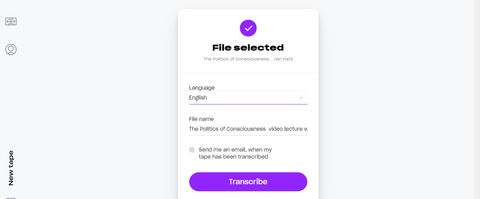
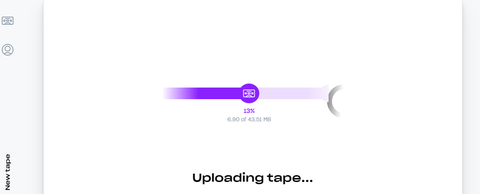
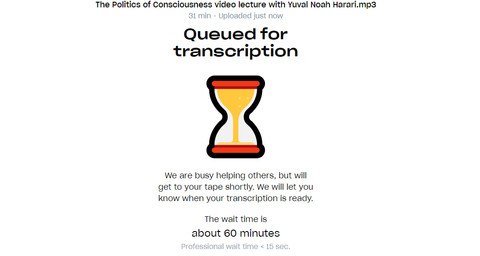
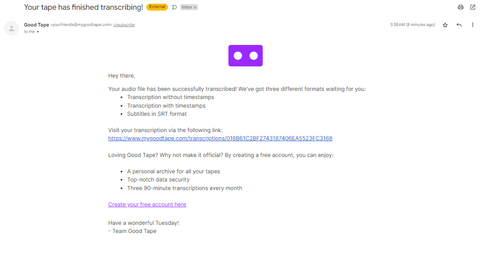
Begin your journey with audio-to-text conversion now and accelerate your dissertation process by using Good Tape’s efficient transcription offerings tailored to your requirements.
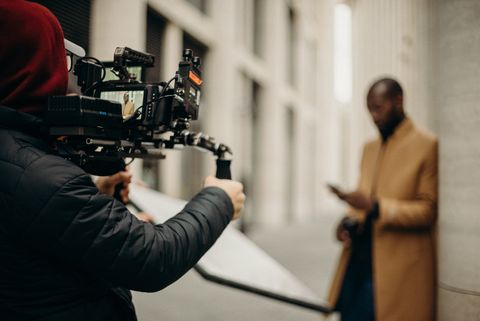


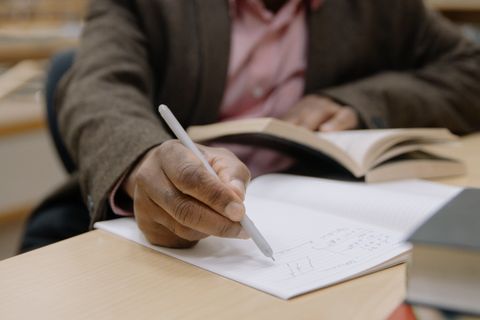
We believe everyone should have access to top-quality automatic trancriptions.
That's why Good Tape is completely free to use . No credit card required.
Good Tape is made with love
in Copenhagen, Denmark.